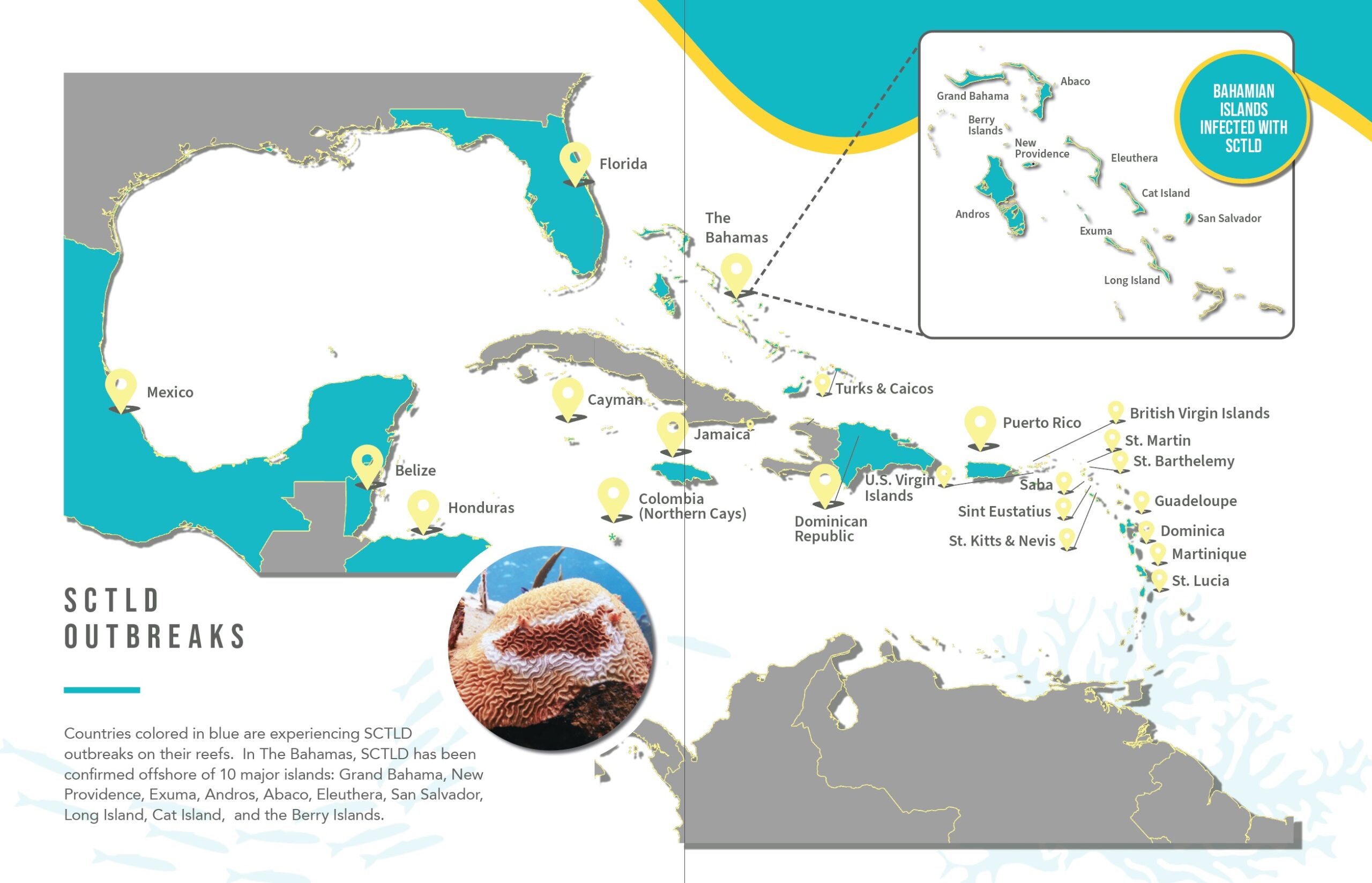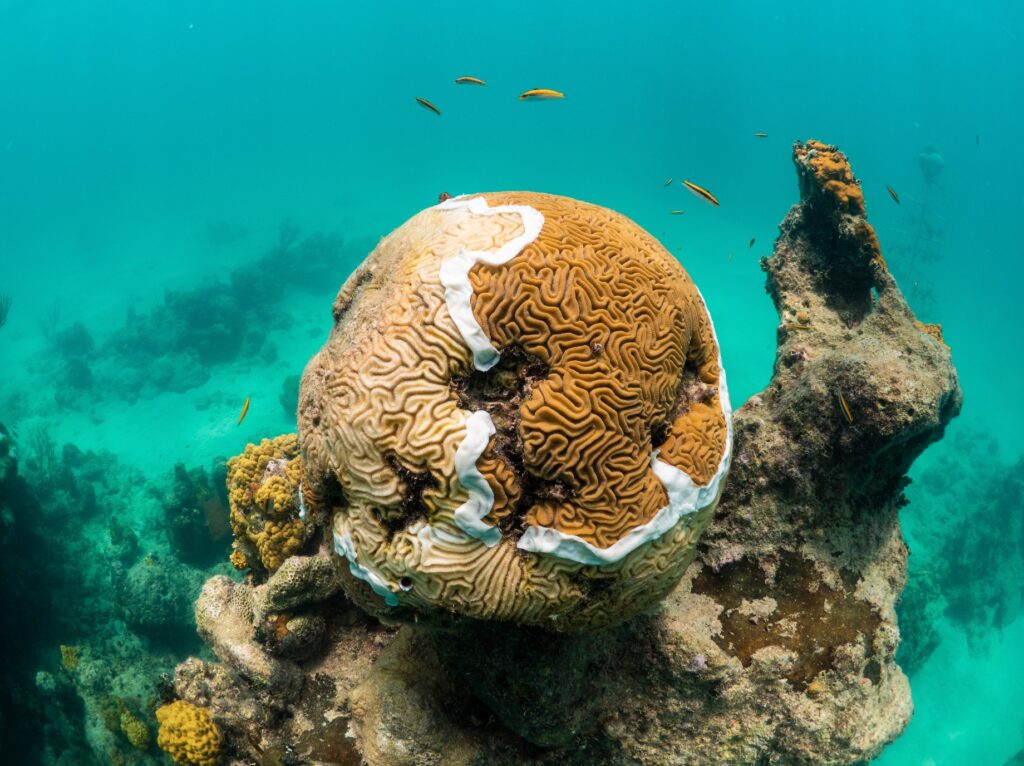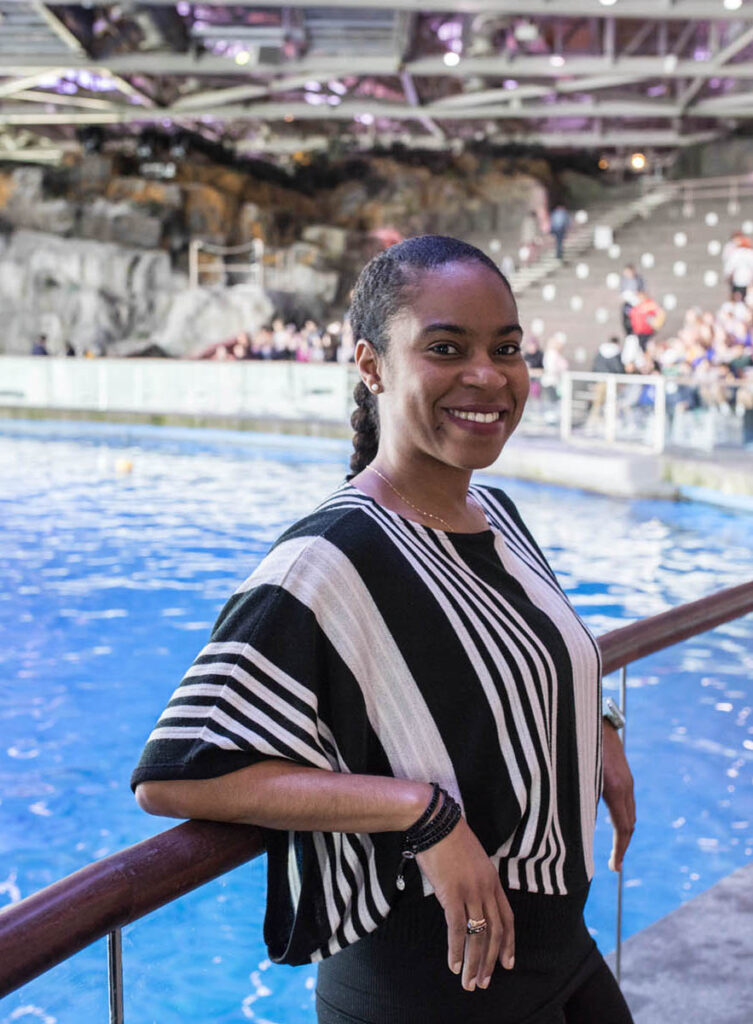Picture this: a vibrant underwater world where countless colorful fish dart among the coral, forming an intricate web of life that captivates the eye and nourishes the soul. But now, imagine that same world on the brink of collapse, as an insidious disease known as Stony Coral Tissue Loss Disease (SCTLD) threatens to wipe out the very foundation of this breathtaking ecosystem.
Ever since SCTLD emerged off the coast of Miami in 2014, it has relentlessly spread throughout the Caribbean, wreaking havoc on essential reef-building coral species and leaving a trail of devastation in its wake. With alarmingly high mortality rates, the situation is nothing short of a deadly underwater pandemic.

In the face of this pressing crisis, researchers and environmental managers from across the region have united, dedicating their efforts to unravel the mysteries of SCTLD and hopefully develop groundbreaking treatment methods. Equipped with state-of-the-art microscopy and molecular techniques, scientists in Florida have recently discovered viruses within the symbiotic algae that reside in coral tissue, and they’re working diligently to determine the relationship between these viruses and SCTLD.
On the frontlines of this battle, antibiotic treatments have proven to be the most effective in slowing and even halting the progression of active lesions on SCTLD-stricken corals. This technique, which involves divers applying an amoxicillin paste directly onto the infected coral tissue, has been widely adopted across the region, with 12 countries – including our beloved Bahamas – embracing this approach. While bacteria have not been visually detected, genetic analysis has exposed their presence within the affected coral tissue, hinting at a possible secondary infection targeting vulnerable corals.

Despite the successes of the antibiotic paste treatment, concerns have emerged regarding its potential long-term effects on coral health and the surrounding ecosystems. However, a revolutionary field technology called “Community In Situ Metabolism” (CISME) has shed a ray of hope, indicating that antibiotic treatments may not cause harm to the remaining healthy coral tissue.
And the innovation doesn’t stop there! Researchers are also exploring the potential of probiotics, a mixture of beneficial bacteria, as an alternative to antibiotic intervention. Probiotics aim to bolster coral resilience in harsh environments and against disease. Preliminary lab and field trials are hinting at species-specific probiotics that can slow the progression of SCTLD, with field experiments currently underway to compare the effectiveness of antibiotics, probiotics, and even combination treatments.
The fight against SCTLD is far from over, but the collaborative efforts of researchers, environmental managers, and new coral restoration techniques offer a beacon of hope for the future of Caribbean coral reefs, including those in The Bahamas.
With coral reefs providing essential ecosystem services such as coastal protection and food security for millions, the Bahamian economy hangs in the balance. Tourism, fishing, and the country’s $90 million spiny lobster fishery employing 9,000 people all rely on healthy coral reefs.
Dr. Krista Sherman, a senior scientist and fisheries expert at the Perry Institute for Marine Science (PIMS), emphasizes the urgent need for action: “If the reefs die, so too will these important industries. We need everyone to take action to protect our reefs and the future of our ocean.” The Perry Institute stands at the forefront of the SCTLD crisis in The Bahamas, spearheading vital research and conservation efforts to protect the archipelago’s precious coral reefs.

For nearly two decades, the Atlantis Blue Project Foundation (ABPF) has been a steadfast supporter of coral reef restoration efforts in The Bahamas, recognizing the vital role these ecosystems play in the region’s ecological balance and economy. Continuing its commitment to the cause, we’re proud to be backing the Perry Institute’s crucial research and conservation efforts to battle SCTLD. Through funding cutting-edge research and innovative practices, ABPF aims to empower the PIMS to develop effective solutions to halt the spread of this devastating disease and protect our invaluable coral reefs.
So, what can you do to help combat SCTLD in The Bahamas? Be mindful during water activities, avoid contact with diseased corals, disinfect equipment and dive gear, and report sightings of diseased corals to PIMS. Boat owners can join the fight by connecting with the Perry Institute at coral@perryinstitute.org or through WhatsApp at +1 206 201-9460.
Together, we can make a difference in this urgent battle to save our precious coral reefs from the clutches of SCTLD. So, let’s roll up our sleeves, dive in, and be the change our oceans need!
Written by:
Lily Haines | PIMS | WhatsApp +1 (613) 791-6045 | lhaines@perryinstitute.org

